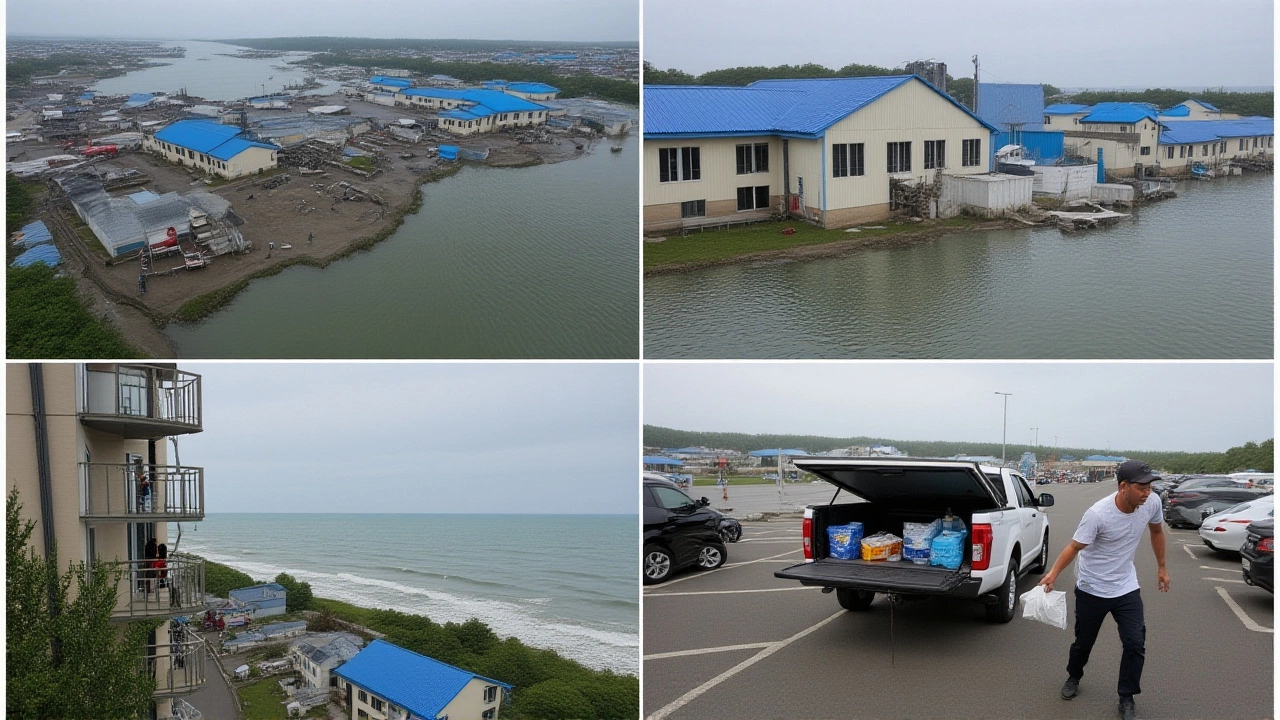When Ilan Kelman, Professor of Disasters and Health at University College London described the July 30, 2025 event as “one of the top ten most powerful earthquakes ever recorded,” he was right on the money. A shallow magnitude 8.8 megathrust struck the eastern flank of the Kamchatka Peninsula at 11:24:52 PETT (23:24:52 UTC), just 119 km east‑southeast of Petropavlovsk‑Kamchatsky. The United States Geological Survey logged the quake at a depth of 20.7 km, classifying it as shallow and therefore especially potent.
What Happened: The July 30 Megathrust
The initial magnitude readout hovered around 8.0, prompting a calm response from Pacific‑wide monitoring agencies. Civil Defence New Zealand later issued a bulletin noting the upgrade to 8.7 and then 8.8, a shift that instantly revived tsunami concerns. Mohammad Kashani, Associate Professor of Structural Engineering at University of Southampton explained, “Shallow earthquakes release enormous energy; when they rupture near the coast they can shove the seafloor enough to launch a tsunami.”
The rupture extended roughly 200 km along the subduction zone, releasing energy comparable to 1.6 × 10³⁰ joules—enough to light up a city the size of New York for a week. Yet the pattern of slip was largely horizontal, a factor that would later temper wave heights.
Tsunami Forecasts and the Pacific Response
Within minutes, the Pacific Tsunami Warning Center activated alerts for coastal regions from Alaska to Chile. Waves up to 3 – 5 m were forecast for vulnerable bays, prompting evacuations for more than two million residents. In New Zealand, the Chatham Islands recorded a 55‑cm surge just after 6:00 am local time. Josh Green, Governor of Hawaii later assured the public that “it’s kind of a blessing to not be reporting any damage.”
Meanwhile, Philip Liu, a tsunami specialist at Texas A&M University and adjunct at Cornell, clarified why the wave story was subdued: “Not every great quake makes a great tsunami. It depends on how the seafloor moves—upward motion creates the wave; sideways slip does not.”
On‑the‑Ground Impacts in Russia and Beyond
In the Russian Far East, the tremor rattled buildings across Kamchatka Krai and the neighboring Sakhalin Oblast. Reports described moderate damage: cracked walls, fallen plaster, and at least twelve injuries, though no fatalities directly from the shaking. A more tragic toll emerged in Japan, where an indirect death and 21 injuries were linked to hurried evacuations on remote islands.
On Shumshu Island, part of the Kuril chain, a localized run‑up of 19 m (62 ft) was measured, a stark reminder that tsunami effects can vary dramatically over short distances. In contrast, Hawai‘i’s coastal gauges logged waves no higher than 4 ft, well below the alarm thresholds.
Science Behind the Wave: Why the Tsunami Was Smaller Than Expected
Seismologists point to the earthquake’s rupture geometry. The fault slipped predominantly in a thrust‑horizontal direction, limiting the vertical displacement of the ocean floor. Joanna Faure Walker, Head of the Risk and Disaster Reduction department at University College London emphasized, “Following official guidance saved lives; most people underestimate how a modest‑height tsunami can still move massive debris and flood low‑lying zones.”
Computer models run by the USGS showed a peak seafloor uplift of only 0.6 m, far less than the 2‑3 m needed to generate a Pacific‑spanning megatsunami. The result: most coastlines saw waves that resembled a fast‑moving tide rather than the towering walls depicted in popular media.
Looking Ahead: Aftershocks and Future Preparedness
Just over a month later, on 13 September 2025, a magnitude 7.4 tremor rattled the same segment of the subduction zone, 111 km east of Petropavlovsk‑Kamchatsky at a depth of 39.5 km. The Pacific Tsunami Warning Center quickly ruled out any tsunami threat, and coastal alerts were lifted within hours.
The twin events have spurred calls for bolstered early‑warning infrastructure across the Ring of Fire. Researchers at the Pacific Tsunami Warning Center are evaluating sensor placements to cut the average issuance time from 2 minutes to under 30 seconds. Meanwhile, local authorities in Russia are revising building codes to better withstand shallow, high‑energy quakes.
- Over 2 million people evacuated across the Pacific.
- Maximum recorded wave height: 19 m on Shumshu Island.
- Global seismic networks detected the quake within 10 seconds.
- Follow‑up 7.4‑magnitude quake caused no tsunami.
Key Takeaways
The July 30, 2025 Kamchatka earthquake reminded the world that magnitude alone does not dictate tsunami size. It also showcased how rapid, coordinated alerts can move millions to safety, even when the eventual waves turn out to be modest.
Frequently Asked Questions
How did the tsunami affect New Zealand?
Coastal communities on the Chatham Islands saw a 55‑cm surge that prompted temporary sheltering, but no major damage was reported. Elsewhere the waves stayed under a metre, allowing authorities to lift warnings within hours.
Why didn’t the 8.8‑magnitude quake generate larger waves?
The fault’s slip was mainly horizontal, producing limited vertical uplift of the seafloor—only about 0.6 m. Without a strong upward bulge, the ocean water didn’t receive enough energy to form a high‑amplitude tsunami.
What safety measures were taken in Hawaii?
Hawaiian officials activated the state’s tsunami siren network, evacuated beach parks, and set up information stations. Governor Josh Green later confirmed that all coastal shelters were cleared without injuries.
What is the likelihood of another big quake in Kamchatka this year?
Seismologists say the subduction zone is overdue for another large event, estimating a 10‑15 % chance of another magnitude 8+ quake before the end of 2025, based on historical recurrence intervals.
How do modern seismic networks improve warning times?
Advanced broadband sensors relay ground motion data within seconds to global hubs. Coupled with real‑time modeling, alerts can now be issued in under two minutes, giving coastal populations crucial evacuation lead‑time.





